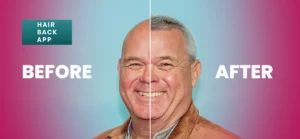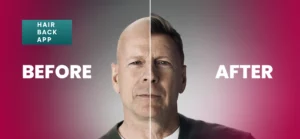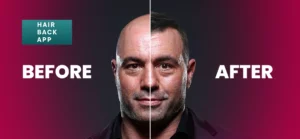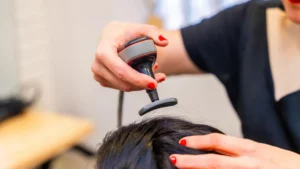Hair transplant recovery timeline is essential for anyone planning or recovering from a hair transplant. Understanding each recovery phase helps set realistic expectations and ensures optimal results.
My name is Emma Wright, your resident hair transplant and restoration specialist. Today, we’ll be discussing Hair transplant recovery timeline. In this article, we’ll explore weekly healing milestones, practical tips, and essential insights for every stage of recovery.
Introduction to Hair Transplant Recovery Timeline
Before we break down the Hair transplant recovery timeline, it’s important to recognize that recovery is a personal journey. Each individual’s healing experience may differ based on health conditions, hair type, and the techniques used during the transplant.
However, having a general understanding of the process allows you to navigate recovery confidently and with realistic expectations. This guide aims to provide you with a supportive framework, offering practical advice and highlighting essential milestones along the way.
What is a Hair Transplant Recovery Timeline?
The Hair transplant recovery timeline refers to the week-by-week healing stages following a hair transplant. This timeline outlines what patients can expect at each phase, including scalp sensitivity, hair shedding, and new growth. Knowing the timeline helps manage concerns and promotes effective recovery.
This process is influenced by several factors, including the hair growth cycle, nutrition in hair growth and health, and individual healing rates. A clear understanding of these elements can significantly improve recovery outcomes.

Week-by-Week Hair Transplant Recovery Breakdown
The Hair transplant recovery timeline is not one-size-fits-all. While this breakdown provides general expectations, individual recovery depends on numerous factors such as age, overall health, and adherence to aftercare instructions.
It’s essential to understand that patience, consistency, and proper care are your best allies throughout this journey. Set realistic expectations and consult your healthcare provider regularly for tailored advice.
Understanding the Week-by-Week Recovery Journey
Before we explore each week in detail, it’s important to understand that the Hair Transplant Recovery Timeline provides a general framework.
Recovery experiences may vary based on factors like surgical technique, scalp health, and adherence to aftercare instructions. This section aims to prepare you for the key phases and ensure that you approach each milestone with confidence.
Week 1: Immediate Post-Transplant Phase
The Hair transplant recovery timeline begins with immediate care after surgery. This period is critical for protecting newly implanted hair grafts.
Key Milestones:
- Swelling around the forehead and eyes.
- Mild discomfort or itching.
- Scab formation around the transplanted area.
- Sensitivity around the hairline area.
- Limited physical activity recommendations.
- Feeling of tightness or numbness on the scalp.
Tips for Recovery:
- Sleep with your head elevated.
- Gently wash your scalp as directed by your doctor.
- Avoid strenuous activities.
- Wear a loose-fitting hat when outdoors to protect the scalp.
- Avoid alcohol and smoking, as they can impede healing.
During this stage, understanding the hair growth cycle is crucial. Shedding during this period is natural and indicates that the hair follicles are transitioning into a new growth phase.
Additional Insights:
Patients may experience mild anxiety due to visible scabbing and swelling. Reassurance from the medical team and understanding that this phase is temporary can ease concerns.
Week 2: Shedding and Healing Phase
The Hair transplant recovery timeline in week two is marked by the shedding phase, known as shock loss. This is a normal process.
What to Expect:
- Noticeable reduction in redness and swelling.
- Scabs begin to fall off naturally.
- Transplanted hair sheds temporarily.
- Slight itching as the scalp continues to heal.
- Formation of a soft crust around transplanted follicles.
Focus on nutrition in hair growth and health to support the healing process. A diet rich in essential vitamins and minerals aids recovery and boosts hair growth. Incorporate foods like eggs, berries, spinach, and avocados for optimal results.
Essential Advice:
Hydration plays a key role. Drinking plenty of water helps maintain scalp health and supports the recovery process. Mild scalp massages (if permitted by your doctor) may also improve blood circulation.
Weeks 3-4: Early Signs of Growth
Hair transplant recovery timeline now shows subtle growth changes. New hair shafts may start appearing beneath the skin.
Milestones:
- Minimal redness remains.
- Hair shafts emerge, though fine and thin.
- Scalp regains its natural tone.
- Gradual reduction in scalp sensitivity.
- Initial soft hair resembling peach fuzz.
Expert Insight:
Understanding hair growth patterns is vital. New growth may seem uneven, but this normalizes as hair continues to mature. It’s essential to stay patient and trust the process during these weeks.
Care Tips:
- Continue gentle washing and moisturizing routines.
- Avoid exposure to direct sunlight.
- Maintain a balanced diet to support hair follicle strength.
Monthly Hair Transplant Recovery Progress
Months 2-3: Growth Becomes Noticeable
During this stage of the Hair transplant recovery timeline, soft, thin hairs start to emerge.
Key Changes:
- Fine, light-colored hairs become visible.
- Hair follicles grow more active.
- Reduced scalp sensitivity.
- Early formation of the new hairline design structure.
- Improved scalp texture and reduced tightness.
The importance of hairline design becomes apparent as emerging hair begins defining your new look. This stage allows patients to see the initial outcome of their desired hairline.
Lifestyle Adjustments:
Consider adding scalp massages to stimulate blood flow. Consult with your doctor before introducing hair growth products.
Months 4-6: Significant Growth Phase
The Hair Transplant Recovery Timeline becomes particularly rewarding between months four and six.
What to Expect:
- Thicker hair growth.
- Enhanced hair density.
- Hair begins blending naturally with existing strands.
- Strengthening of hair texture.
- Increased scalp flexibility and reduced numbness.
The impact of hair transplant innovation plays a crucial role here, with advanced techniques improving both recovery speed and hair quality. This period is typically when patients begin feeling confident about their new appearance.
Styling Recommendations:
Patients can start mild styling routines. Using wide-tooth combs and avoiding heat treatments ensures hair remains healthy.
Months 6-9: Maturing Hair Growth
This phase of the Hair transplant recovery timeline is characterized by more mature hair growth.
Milestones:
- Hair achieves natural texture and density.
- Significant improvements in coverage.
- A well-defined hairline design is now visible.
- Hair starts responding better to styling.
- Consistent growth patterns across the scalp.
Understanding the hair growth cycle is essential at this stage, as growth rates vary among individuals. Regular trimming and appropriate hair care routines can now be incorporated.
Professional Care:
Trims at professional salons with experience in post-transplant care can improve overall appearance and ensure continued growth.
Months 9-12: Final Results and Long-Term Care
The Hair transplant recovery timeline concludes between nine to twelve months when final results become visible.
Final Milestones:
- Fully matured hair growth.
- Natural texture and volume achieved.
- Final adjustments in hairline design are evident.
- Hair responds well to various hairstyles and grooming.
- Strengthened scalp health with minimal sensitivity.
Continuing to prioritize nutrition in hair growth and health ensures sustained results and overall hair strength. Consistency in aftercare routines further ensures long-term success.
Long-term Maintenance Tips:
- Use mild shampoos and conditioners.
- Protect hair from excessive sun exposure.
- Stay hydrated and maintain a nutrient-rich diet.
Conclusion: Achieving Optimal Results
The Hair transplant recovery timeline provides a comprehensive overview of the healing process.
By following each stage and incorporating key tips, patients can look forward to optimal outcomes. Recognizing factors such as hair growth patterns and leveraging hair transplant innovation will further enhance the recovery journey.
Understanding this timeline ensures you are well-prepared and confident throughout your hair transplant recovery experience.














